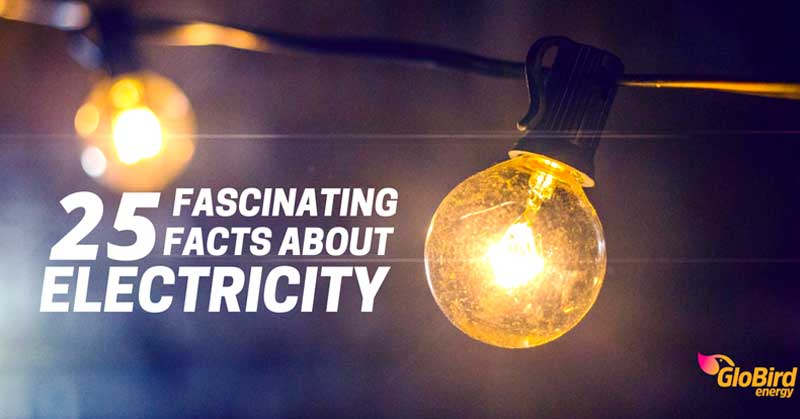In case you’re just as into electricity as we are, here are a bunch of things that you might find interesting … or impressive … or unusual … or useless!
If you’re not yet fascinated by history of electricity, read on and you may be!
The history of electricity
- The basic principles of electricity generation were discovered during the 1820s and early 1830s by the British scientist Michael Faraday. His method is still used today: electricity is generated by the movement of a loop of wire, or disc of copper, between the poles of a magnet.
- Australia’s first recorded use of electricity was to light Sydney’s General Post Office in 1878.
- The first street in the world to be lit by electric light bulbs was Mosley Street, Newcastle upon Tyne, in 1879.
- Thomas Edison built the first power plant, and in 1882 his Pearl Street Power Station in New York sent electricity to 85 buildings.
- The first successful electric car was built in 1891 by American inventor William Morrison.
Electricity facts and figures
- Electricity travels at the speed of light, about 300,000 kilometres per second.
- A spark of static electricity can measure up to 3,000 volts.
- The average taser emits 50,000 volts.
- A bolt of lightning can measure up to three million (3,000,000) volts (and lasts less than one second).
- According to the Global Energy Statistical Yearbook, global electricity production for 2015 approached 25,000 terawatt hours (1 terawatt = 1 trillion watts).
Using electricity
- The first four common domestic items to be powered by electricity were the sewing machine, fan, kettle and toaster.
- LED light bulbs use about one-sixth of the electricity that conventional bulbs do, cost about a quarter as much to use, and last about 40 times longer.
- A typical microwave oven consumes more electricity powering its digital clock than it does heating food
- Appliances also use electricity when they’re switched off. The average desktop computer idles at 80 watts, while the average laptop idles at 20 watts. A Sony PlayStation 3 uses about 200 watts, both when it’s active and when it’s idle.
- As an example of how much more efficient modern appliances are, a fridge from the mid-80s, 30 years ago, used four times as much electricity as a modern one (about 1400 kWh a year compared to 350 kWh).
Other electricity
- Electricity causes muscle cells in your heart to contract, essentially making it beat. Electrocardiogram (ECG) machines measure the electricity going through the heart. As the heart beats in a healthy person, the ECG machine displays a line moving across the screen with regular spikes (as you’ve seen in a hundred movies and TV shows).
- In some species of fish native to the Amazon River, certain muscle cells have evolved over millions of years into cells called electrocytes, which they use for echolocation, that is to detect obstacles and other animals in the dark.
- Echidnas and platypuses use the electrical impulses emitted by their prey to find food. A platypus’ bill is covered in nearly 40,000 electricity sensors – or electroreceptors – arranged in a series of stripes.
- The electric eel (a type of knifefish) can deliver a shock of up to 600 volts, for hunting or self-defence.
- You may have watched a gecko climb what looks to be a smooth surface. This ability is due in part to the electrostatic forces on the gecko’s toe pads. The difference in charge between its feet and the surface help it “stick” to the wall.
Some real electricity trivia
- The word “electrocute” is a combination of the words electro and execute, meaning you were killed by electricity. So, if you don’t die, you were not electrocuted, only shocked.
- Ore trains in Sweden traveling down to the coast generate five times the amount of electricity they use, powering nearby towns and the return trip for other trains
- In Albertville, France (host city of the 1992 Winter Olympics), they make electricity from cheese! Since whey isn’t needed to make Beaufort cheese, bacteria is added to the whey, turning it into biogas. This gas is then fed through an engine which heats water to generate electricity.
- Electricity was introduced to Ethiopia in 1896 after Emperor Menelik II ordered two newly invented electric chairs as a form of humane capital punishment and realised they were useless in his country without electricity.
- Someone took the trouble to calculate this, and we’re going to take their word for it: you would need about 648 AA batteries to power a human being for a day (based on 1 calorie = 4.2 Joules)!
